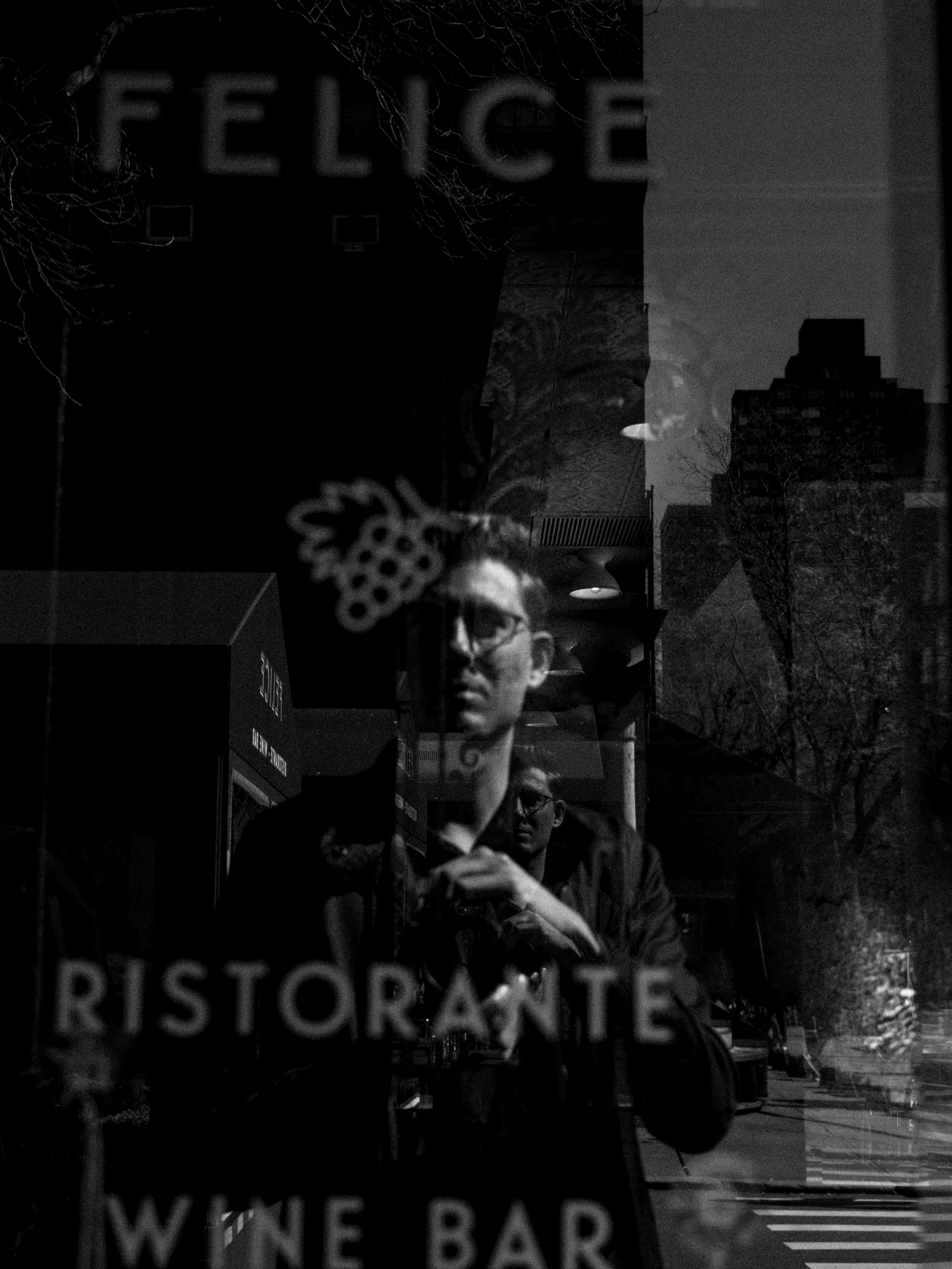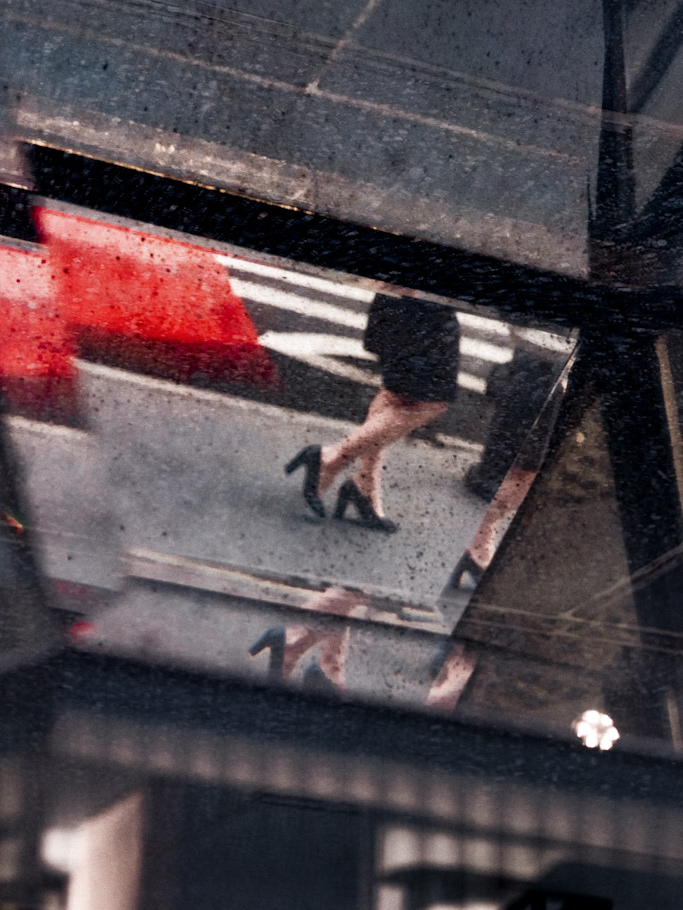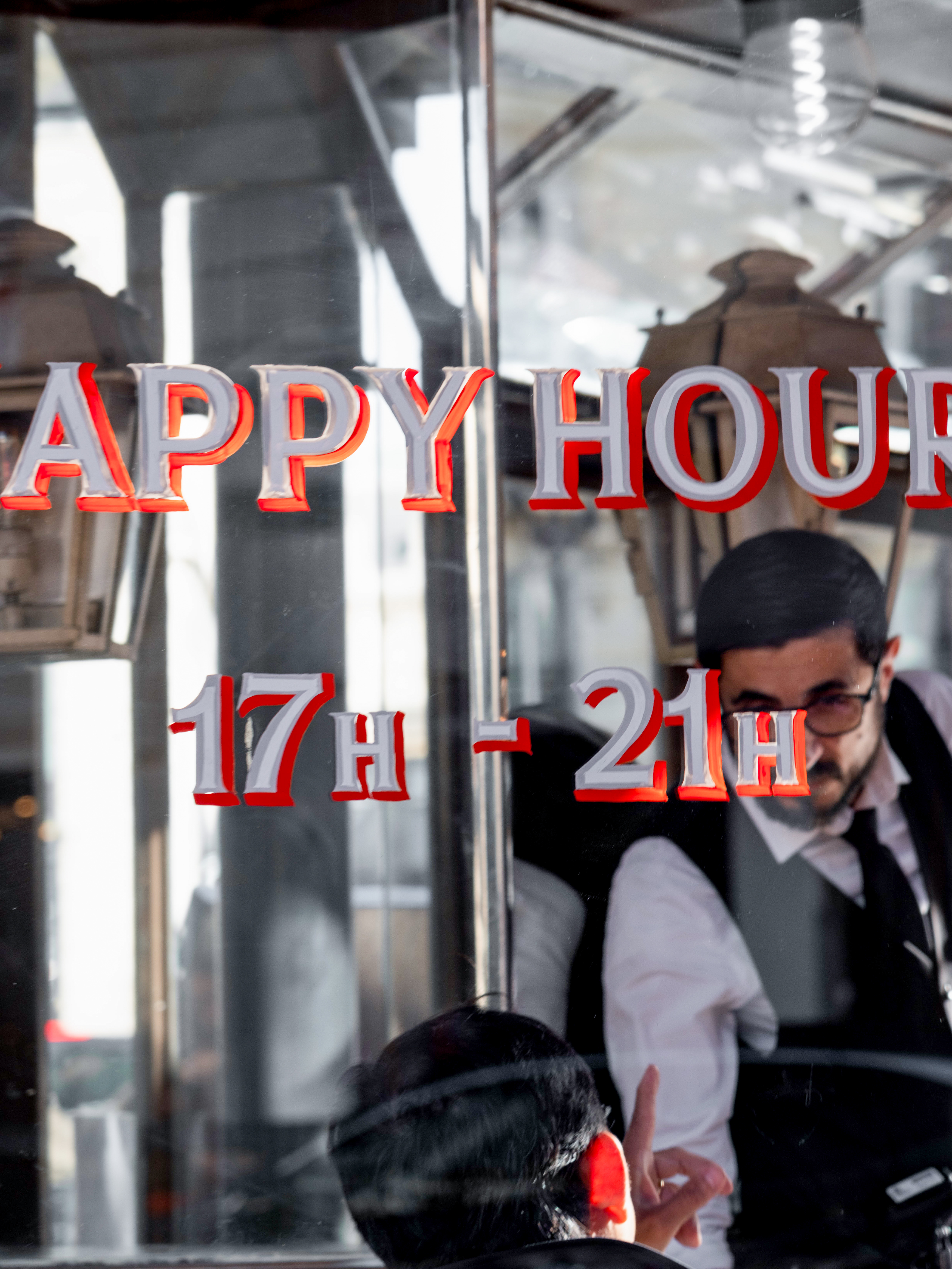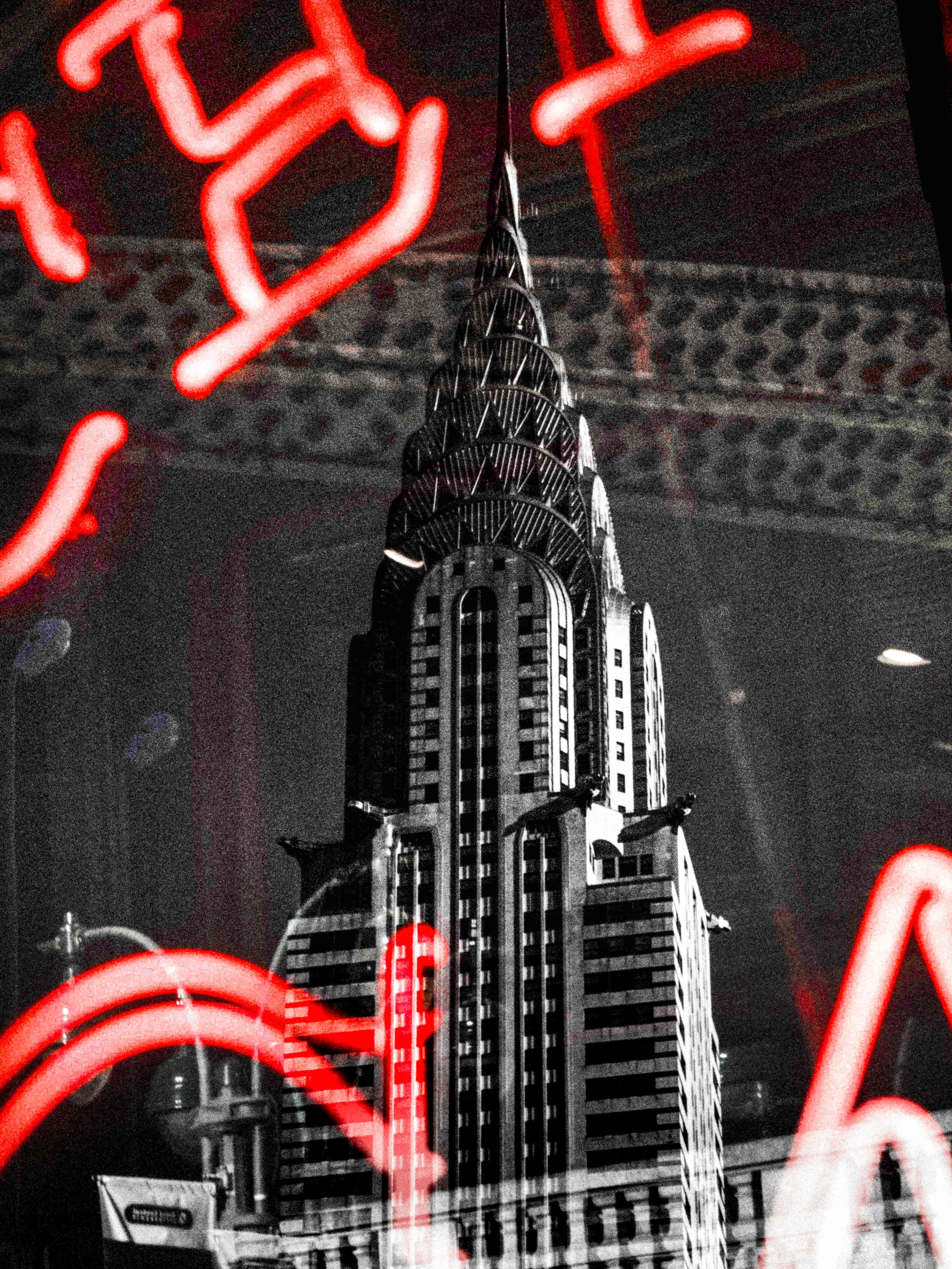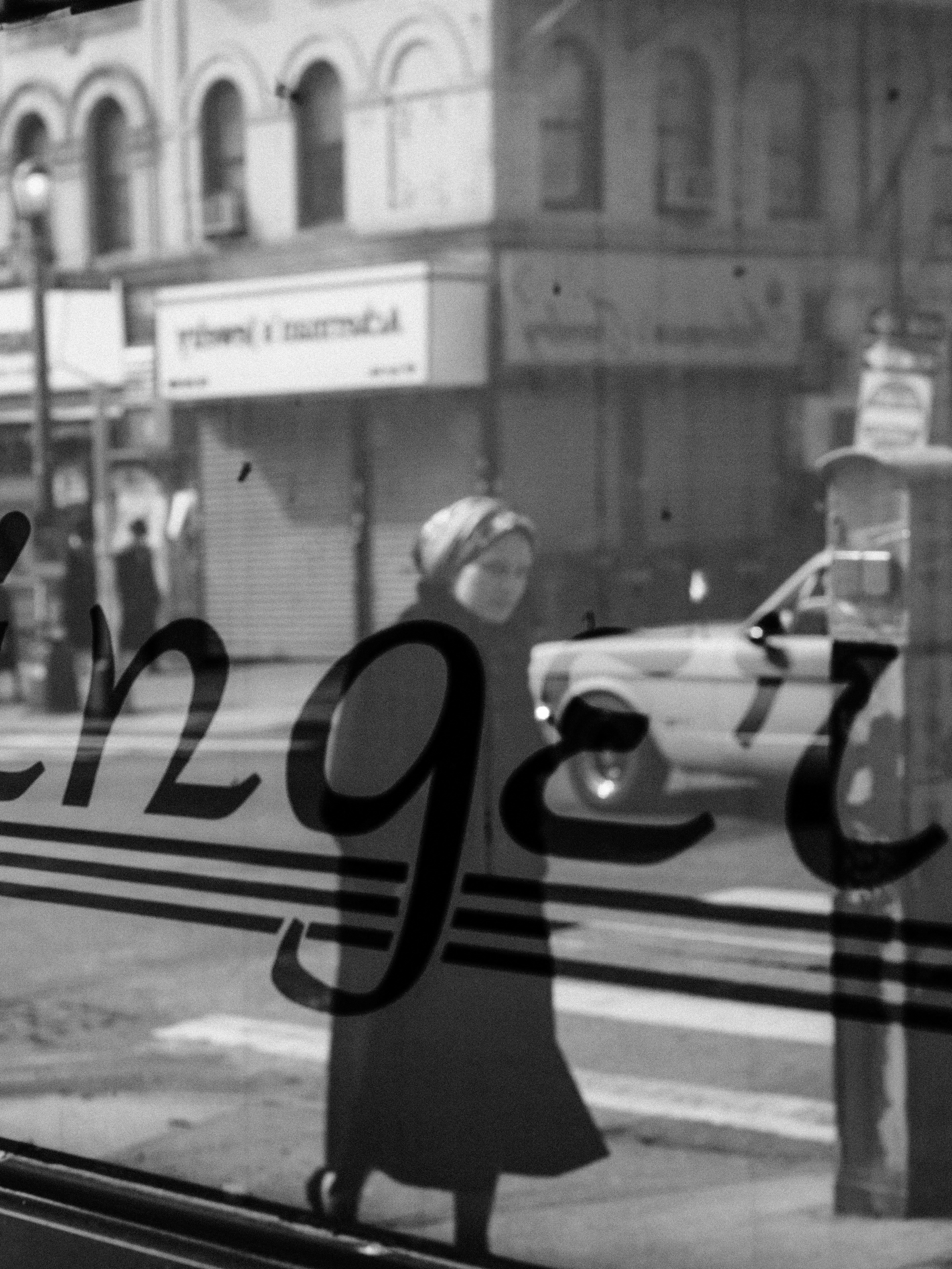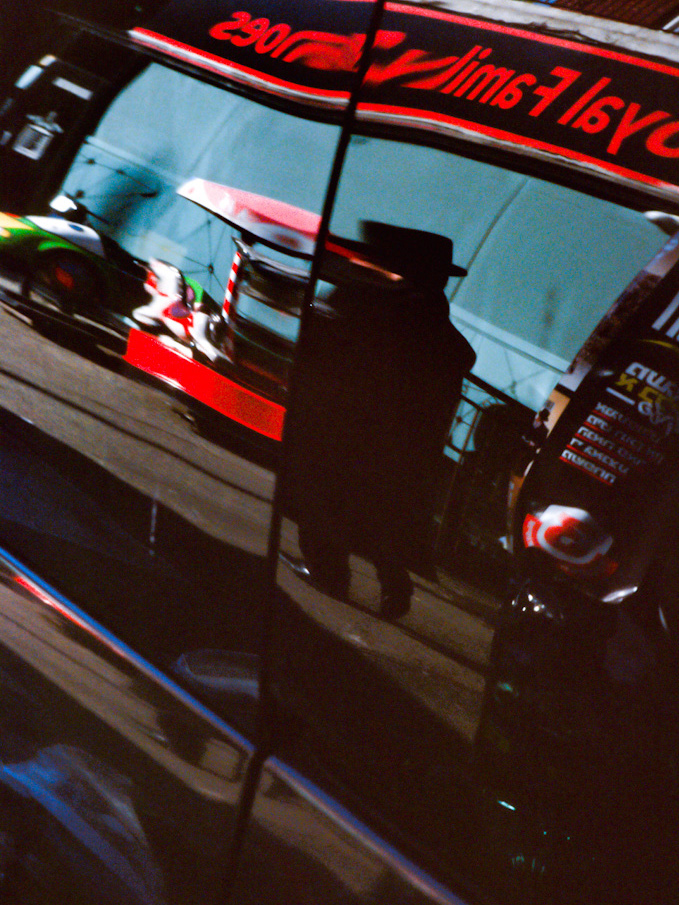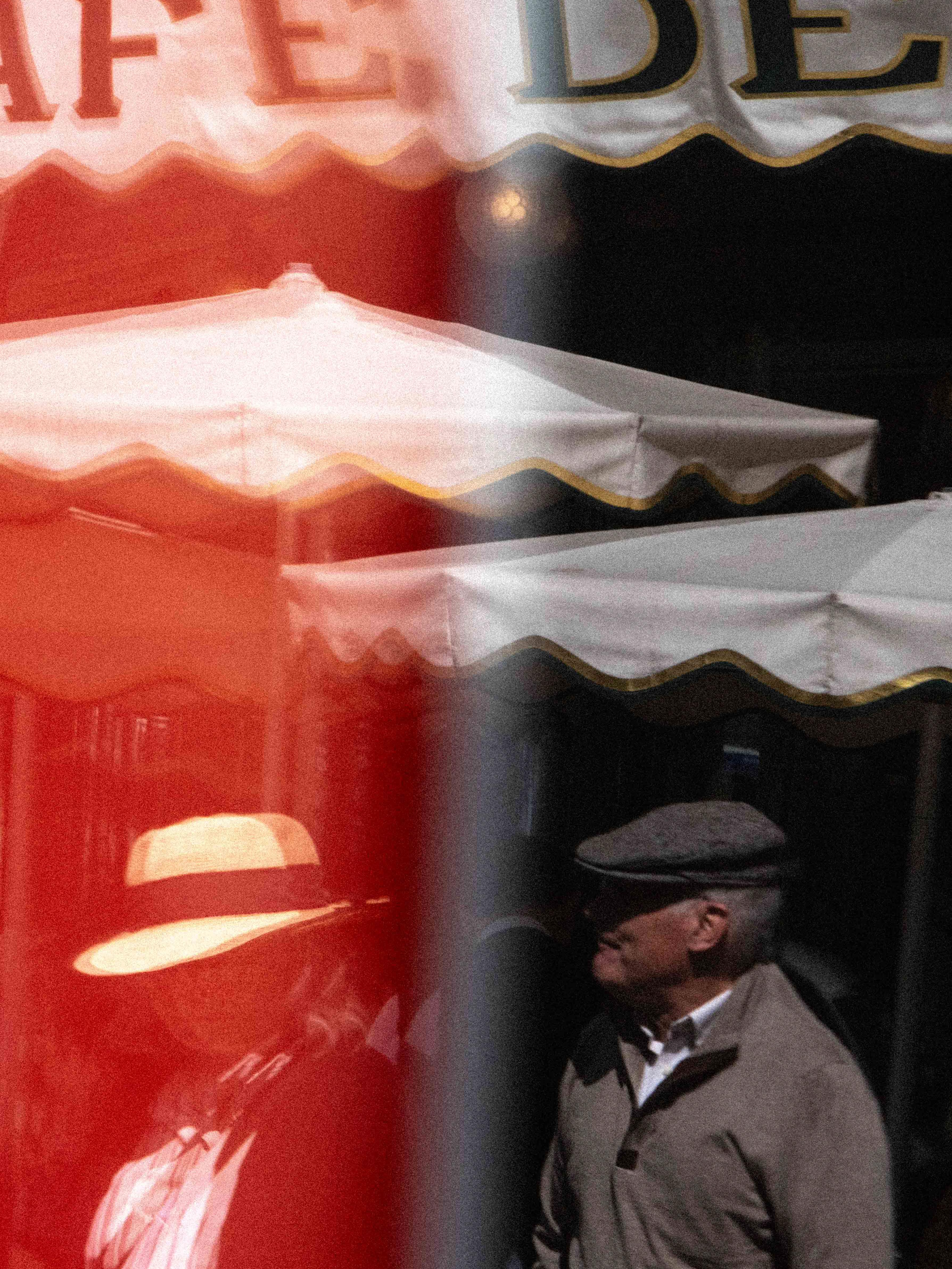












There’s something unique about photographing through glass. Its distortions, unpredictability, and play with light create abstraction. Most of all, reflections and windows transform ordinary scenes, adding new layers and complexity.
My approach to this did not come from a rulebook. It came from Saul Leiter and a process of trial and error.
Leiter’s work changed how I understood photography. His images were not just documents; they were dreams,—blurry, abstract, emotional. Taking the mundane and making it something extraordinary. He’d shoot through fogged-up café windows, umbrellas, tinted glass, or rain textured windshields. The city would melt into color and shape. People became gestures. Street signs became layers. It was not about clarity or about story. It was about feeling. Completely sensory.
That influence crept into my own work, especially while shooting in cities like Paris, Lisbon, and New York. I started noticing moments between moments—the way someone’s face would blend with a mannequin refelected window, or how a neon sign would appear in glass storefront, people walking through frame appearing as if it was a double exposure. Suddenly, my subjects were not just the people, I was photographing the space between us. A hidden world.
Reflections and windows break the straight forward surface of reality. Instead of one scene, you get two or three or sometimes more. They create ambiguity. They make you look twice. You might see a man waiting for a bus, but you also see the building behind him, the cars on the street, and your own silhouette in the frame. All at once. It’s messy. And that’s what I love about it.
Technically, it can be frustrating. Reflections don’t always cooperate. You move an inch and the whole composition collapses. But that’s the fun, those little shifts force you to slow down, to observe more carefully. Shooting through glass turns the act of photography into something more active, almost painterly. Your not just framing a subject, you are composing layers of light, depth, and distortion.
Sometimes, I don't even know what I’ve captured until I’m reviewing the images later. There’s an element of surprise that I’ve come to appreciate. It’s not about control. It’s about setting the stage and letting the environment do the rest.
What reflections offer is a chance to build complexity. They let you make photos that feel like something more than what they are. They become visual poems, glimpses of reality doubled back on itself, refracted and re-displayed.
When people ask me what I look for when I shoot, I never really know what to say. But more and more, I think I’m just chasing layers. That feeling when something simple—like a street corner or café window—suddenly holds multiple dimensions.
That’s the magic of reflections: they let you photograph the surface, and everything beneath it, all at once.
